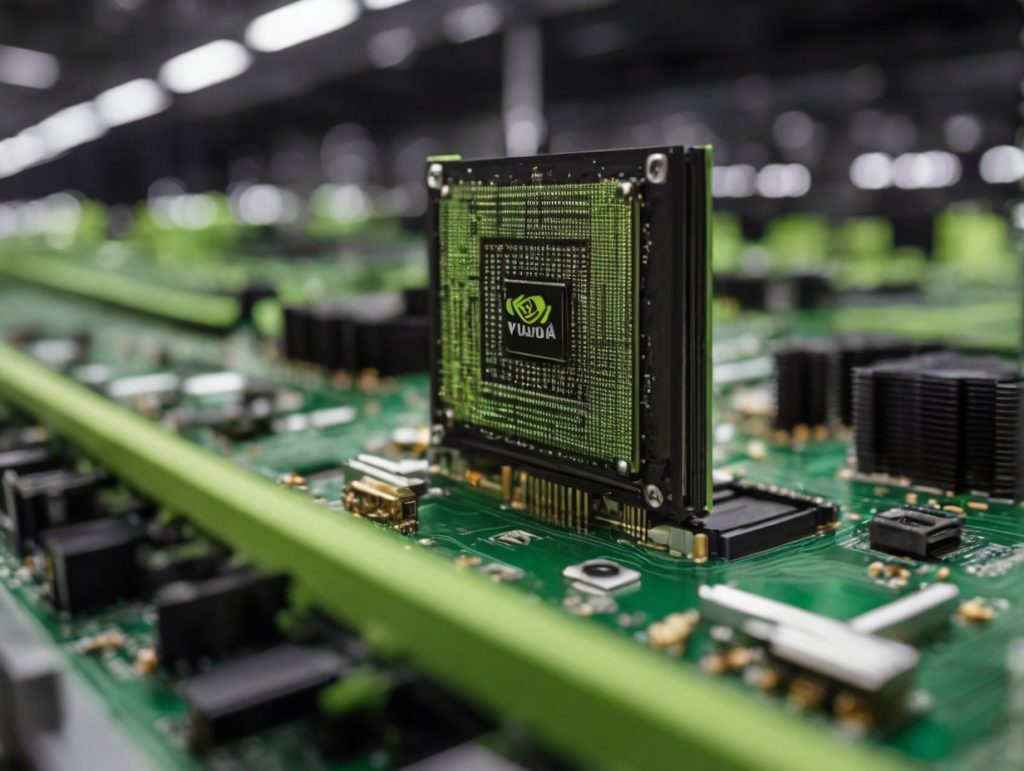In a significant development, Nvidia has revealed that the latest U.S. export restrictions are set to impede the sales of two highly advanced AI chips specifically designed for the Chinese market. The move, outlined in a filing late on Tuesday, comes as part of the U.S. government’s efforts to curb the transfer of cutting-edge technologies to Beijing, with Nvidia citing potential consequences for its top-tier gaming chips and the recently unveiled L40S chip. The repercussions are not limited to Nvidia alone, as the restrictions are expected to cast a shadow over rival chips produced by industry giants Advanced Micro Devices (AMD) and Intel, marking a pivotal moment in the semiconductor landscape.
Impact on Nvidia’s advanced AI chips
Nvidia, in its recent filing, has laid bare the intricate ramifications stemming from the latest U.S. export restrictions imposed upon the cutting-edge AI chips meticulously designed by the company to cater to the discerning Chinese market. The repercussions are notably pronounced for the A800 and H800, both intricate iterations painstakingly crafted to align with the antecedent export regulations, now finding themselves ensnared in a sales impasse courtesy of the freshly updated regulatory landscape. Even Nvidia’s zenithal gaming chips, lauded for their unparalleled performance prowess, find no sanctuary from the expansive reach of these stringent regulations.
Also, the regulatory clampdown casts a pervasive net, encompassing the L40S chip, unveiled a mere few moons ago in the month of August, thereby underscoring a sweeping and comprehensive impact on Nvidia’s otherwise diverse and extensive product portfolio. Notably, the corporate response to these constraints has been conspicuously restrained, with Nvidia maintaining a stoic silence that extends beyond the official communiqué encapsulated within the filing.
Ripples across rival territory
The implications of the export controls are not confined to Nvidia, as rival chipmakers Intel and AMD find themselves caught in the regulatory crossfire. Intel’s Gaudi 2 chip, introduced to the Chinese market in July, is slated for a ban under the new rules, echoing a similar situation where a specific version was tailored to adhere to last year’s regulations. Intel, cautious in its response, refrains from commenting on the fate of the Gaudi 2 chip, emphasizing an ongoing assessment of the updated rules.
AMD, on the other hand, faces uncertainty around its current AI chip, the MI250, with analysts speculating that the impending MI300 chip may also fall victim to the tightened controls. As the export restrictions cast a shadow over key players in the semiconductor arena, industry stakeholders closely watch for potential shifts in business strategies and global operations.
In its filing, Nvidia acknowledges the possibility of relocating certain business operations out of countries affected by U.S. export curbs. The broader impact on the development timeline of specific products, support for existing customers, and the supply chain for affected regions is a cause for concern. As the Biden administration expands restrictions on the export of high-end technology, the semiconductor landscape faces a dynamic shift, prompting industry players to navigate a complex terrain of regulatory challenges.
In the wake of these stringent export controls, the semiconductor industry stands at a crossroads, grappling with the far-reaching implications on innovation, competition, and global business strategies. Nvidia’s revelation serves as a poignant reminder of the delicate balance between technological advancement and geopolitical tensions. As the dust settles, the industry awaits further developments, pondering the potential reconfiguration of market dynamics and the resilience of companies to adapt to this evolving landscape. The impact on Nvidia, Intel, AMD, and others underscores the intricate interplay between international policies and cutting-edge technology, leaving stakeholders with a complex puzzle to decipher in the ever-shifting realm of AI chips and semiconductor innovation.





